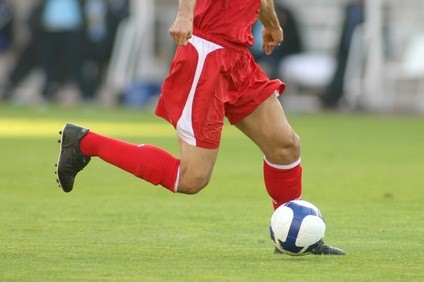 The ACL injury is very common in certain sports such as soccer, football, and basketball. The data has revealed that 14 percent of patients with a unilateral ACL injury will go on to develop an ACL injury to the other leg. There is an incidence of 32 to 70 ACL injuries per 100,000 people per year. It has been reported as high as 500 to 8,500 per 100,000 people per year among soccer players.
The ACL injury is very common in certain sports such as soccer, football, and basketball. The data has revealed that 14 percent of patients with a unilateral ACL injury will go on to develop an ACL injury to the other leg. There is an incidence of 32 to 70 ACL injuries per 100,000 people per year. It has been reported as high as 500 to 8,500 per 100,000 people per year among soccer players.
Paterno et al. reported in the February 2012 Clinical Journal of Sports Medicine that 25% of patients who undergo an ACL reconstruction and return to twisting, turning and jumping sports will suffer another ACL injury within 12 months. What is very interesting is that 75% of those injuries occur to the contralateral (other side) knee.
Life for Athletes Following an ACL Injury on Both Knees
How do these patients perform in sports after sustaining bilateral (both legs undergoing an ACL injury with surgery) ACL injuries? We know that only approximately 43-65% of athletes that sustain an unilateral (one leg) ACL injury and undergo an ACL reconstruction will return back to playing sports at the same level they did before the ACL injury. A study published in the December 2013 American Journal of Sports Medicine authored by Dr. Anne Faltstrom et al. from Linkoping University in Linkoping, Sweden, answers the question of how many players that sustain bilateral ACL injuries return back to sports.
The patients that end up with bilateral ACL injuries return back to their sport, with the same level of play, only 12% of the time. Players will return back to their sport but at a reduced level of play 23% of the time. These numbers are much lower than patients who only have one ACL injury with surgery.
The authors also reported’ “that the patients who underwent bilateral ACL injuries had significantly lower scores in the areas of: the Knee Injury and Osteoarthritis Outcome Scores (KOOS), sub-scales for pain, function in sports and recreation, and knee related quality of life as well as the ACL Deficiency Quality of Life score compared to patients who had undergone a unilateral reconstruction.”
Overall the conclusion of the study was that patients who underwent bilateral ACL reconstructions had poorer results in the areas of: pain, function, quality of life, and return to sports. This study reinforces the idea that all players that participate in high risk ACL injury sports should be encouraged to participate in an ACL prevention program.

Leave a Reply
You must be logged in to post a comment.